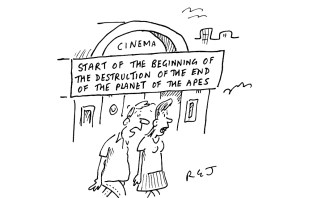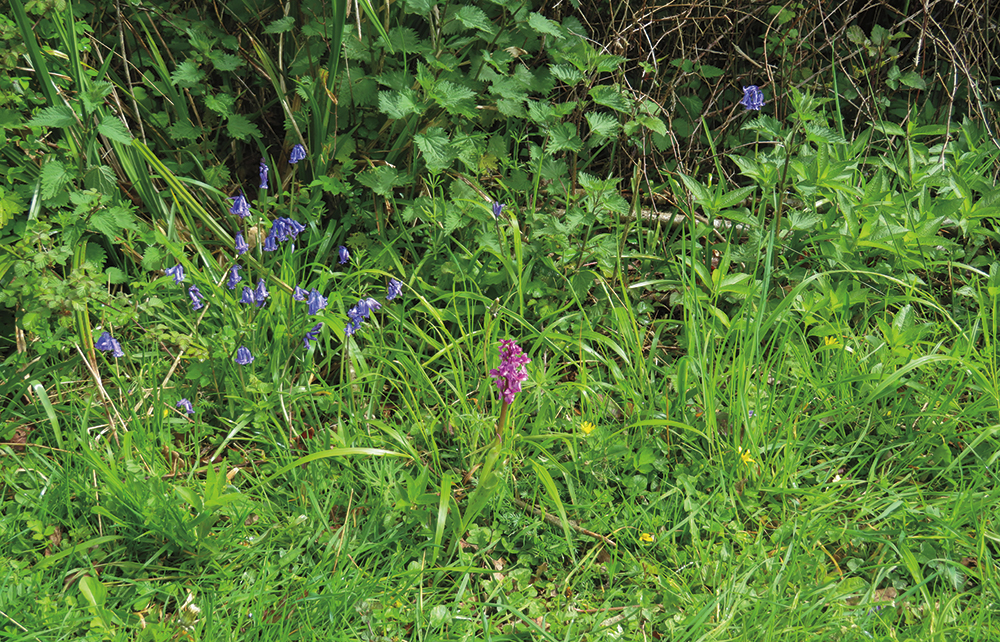Five years ago, a documentary about the Duchy of Cornwall featured the then Prince of Wales in tweeds and jaunty red gauntlets laying a hawthorn hedge. It was a brilliant piece of PR. If Charles was a safe pair of hands with a hedge – something as quintessentially English as a hay meadow or a millpond – he was surely a safe pair of hands full stop.
A cuckoo in one breeding season needs to eat about 22,500 hairy caterpillars
Focusing on a hedge in south-west Wiltshire, Hedgelands combines history, celebration, lament and warning. Christopher Hart is a companionable writer, and makes a powerful case that, at a time of ecological hazard, well-nurtured hedges can play an astonishing role in buttressing the future.
First, though, the past. There is evidence of hedge-laying in this country going back 4,500 years, and ‘Judith’s Hedge’ in Cambridgeshire is at least 900 years old – older than either Windsor Castle or Westminster Abbey. The best hedges, scruffy as scarecrows and colossal as cathedrals, teem with small mammals – shrews, wood mice, bank voles, rabbits, badgers and stoats; reptiles and amphibians; and what John Clare called ‘the merry minstrelsy’ of birds, from robins and song thrushes to willow warblers, yellowhammers and linnets.
Hart savours names. A roll call of plants growing in the Underhill hedge round which the book revolves reads like a ready-made poem by John Betjeman: bluebell, celandine, dog’s mercury, early purple orchid, ground ivy… He’s good at connecting us to England’s wilder and more beautiful past, ‘concealed beneath the modern names of the most urbanised and unpicturesque of places’. Who would have guessed that Croydon means ‘the valley where the wild saffron grows’?
But, while conjuring up rose-tinted olden days, Hart’s more urgent desire is to demonstrate the vital part that hedges have to play as we move into an increasingly perilous future – a ‘human-made mass extinction, the sixth or possibly the seventh in Earth’s history’. The traditional British hedge punches above its weight. Ecologically, it has far more to offer, for the space it occupies, than, say, a forest. It provides a windbreak against soil erosion, a flood defence system and a powerful storage unit for excess carbon dioxide.
Yet our hedges are vanishing. In the second world war, the Luftwaffe photographed much of the south of England from the air, and their pictures revealed what was still a largely medieval landscape, with fields and boundaries unchanged for hundreds of years. But since the 1950s, hedges have disappeared at an alarming rate. Farmers who no longer understand their benefits see them as nothing but obstacles to tractors and chop them down. Developers destroy them out of ignorance or casual indifference. Last year, Barratt Homes demolished a hedge near Bridport to make way for 760 new homes. They apologised and promised to replace it. But you cannot just replace an ancient hedge by planting a new one.
Nothing makes Hart sadder and more furious than barbed wire, for which we import half a million tons of steel from China every year, and treating our fence posts with creosote, which causes skin cancer and lung cancer.
So, there is a good deal of doom. Insect numbers have fallen by 75 per cent from pre-industrial levels, and some insects – the blue stag beetle, the spotted sulphur moth – have gone for good. Hart offers a bizarre vignette of life in south-west China, where pesticides have exterminated so many insects that farmers are shinning up ladders to hand-pollinate apples and pears. And without enough insects, many breeds of bird struggle to survive. A cuckoo, in one breeding season, needs to eat about 22,500 hairy caterpillars. Nightingales are down to 5,000 breeding pairs: most of us have never heard one sing.

But Hart is an optimist, and out labouring with his billhook and pruning saw he is filled with what W.B. Yeats called ‘life’s own self-delight’. Hedging is much tougher than working out in a gym: he reckons he burns 3,000 calories a day, which he could recoup (if he didn’t mind an unvaried diet) by eating ten squirrels at 300 calories apiece. His best chapter explores the food to be harvested from hedges: blackberries, crab apples, sloes, rowanberries, wild redcurrants, blackcurrants, raspberries – ‘the polar opposite of junk food: low in calories, off-the-scale in nutritional value’ (there is 50 times more Vitamin C in rosehips than in oranges). If you’re heading off on a long spring walk, he suggests, lay some wild garlic leaves inside a cheddar sandwich: a robust, strong- tasting snack, infinitely superior to ‘bland pap’ from a supermarket.
So, there are reasons to be cheerful. Hart closes the book by citing a bunch of eco-doomsters who have, happily, got things wrong. One is the King, who in 2009 warned that we had only eight years to save the planet – ‘but we’re still here, and he himself has had a promotion’.







Comments